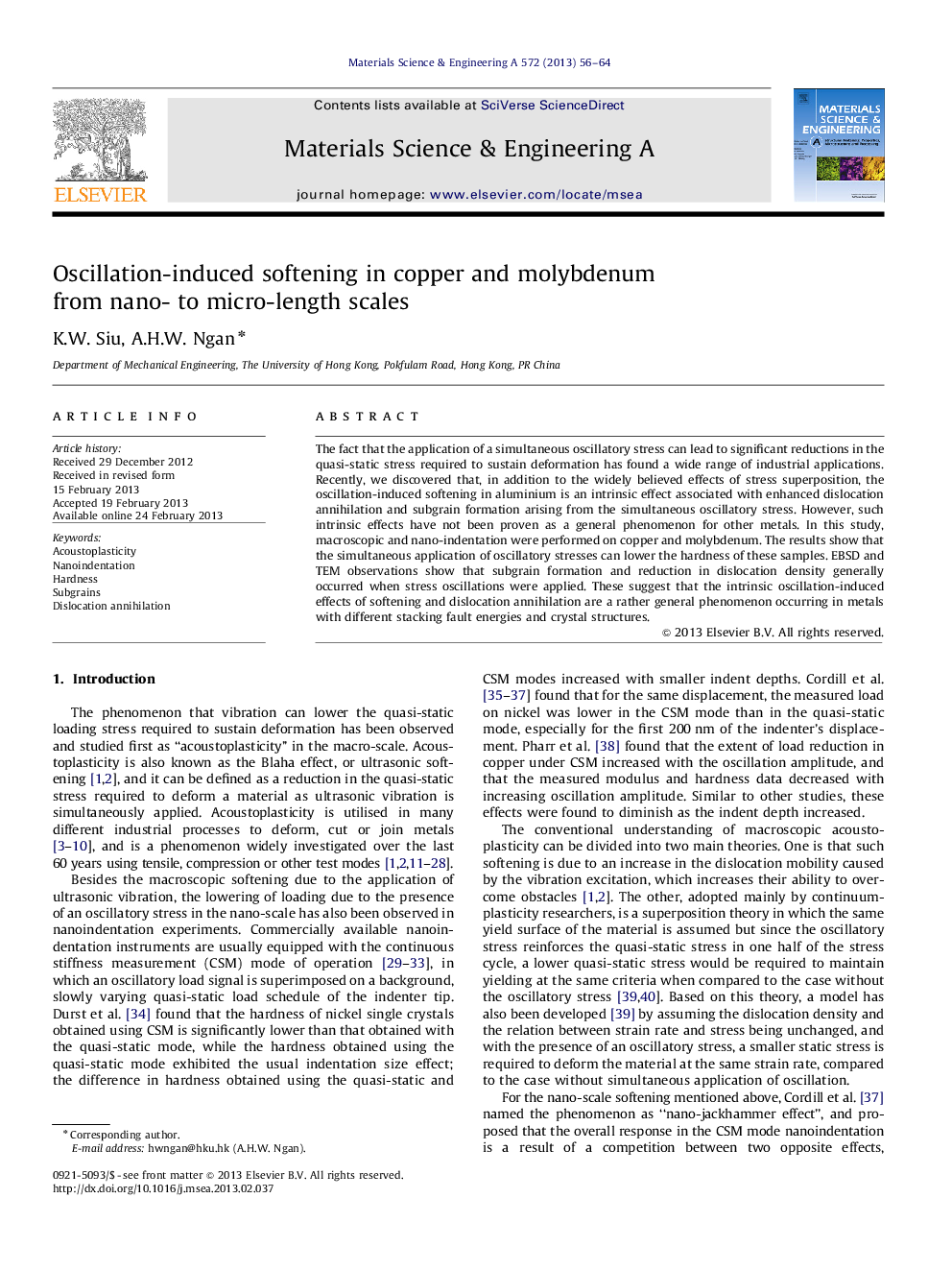| Article ID | Journal | Published Year | Pages | File Type |
|---|---|---|---|---|
| 1576195 | Materials Science and Engineering: A | 2013 | 9 Pages |
The fact that the application of a simultaneous oscillatory stress can lead to significant reductions in the quasi-static stress required to sustain deformation has found a wide range of industrial applications. Recently, we discovered that, in addition to the widely believed effects of stress superposition, the oscillation-induced softening in aluminium is an intrinsic effect associated with enhanced dislocation annihilation and subgrain formation arising from the simultaneous oscillatory stress. However, such intrinsic effects have not been proven as a general phenomenon for other metals. In this study, macroscopic and nano-indentation were performed on copper and molybdenum. The results show that the simultaneous application of oscillatory stresses can lower the hardness of these samples. EBSD and TEM observations show that subgrain formation and reduction in dislocation density generally occurred when stress oscillations were applied. These suggest that the intrinsic oscillation-induced effects of softening and dislocation annihilation are a rather general phenomenon occurring in metals with different stacking fault energies and crystal structures.
